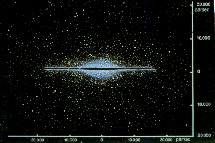
So far, all of the objects we have discussed are relatively nearby (within, say, 10,000 light years). They are, in fact, quite close to our location in the Milky Way galaxy. So let's step back and take a more global view of our home galaxy.


Go to next section.
Return to "Planetarium Shows This Semester"